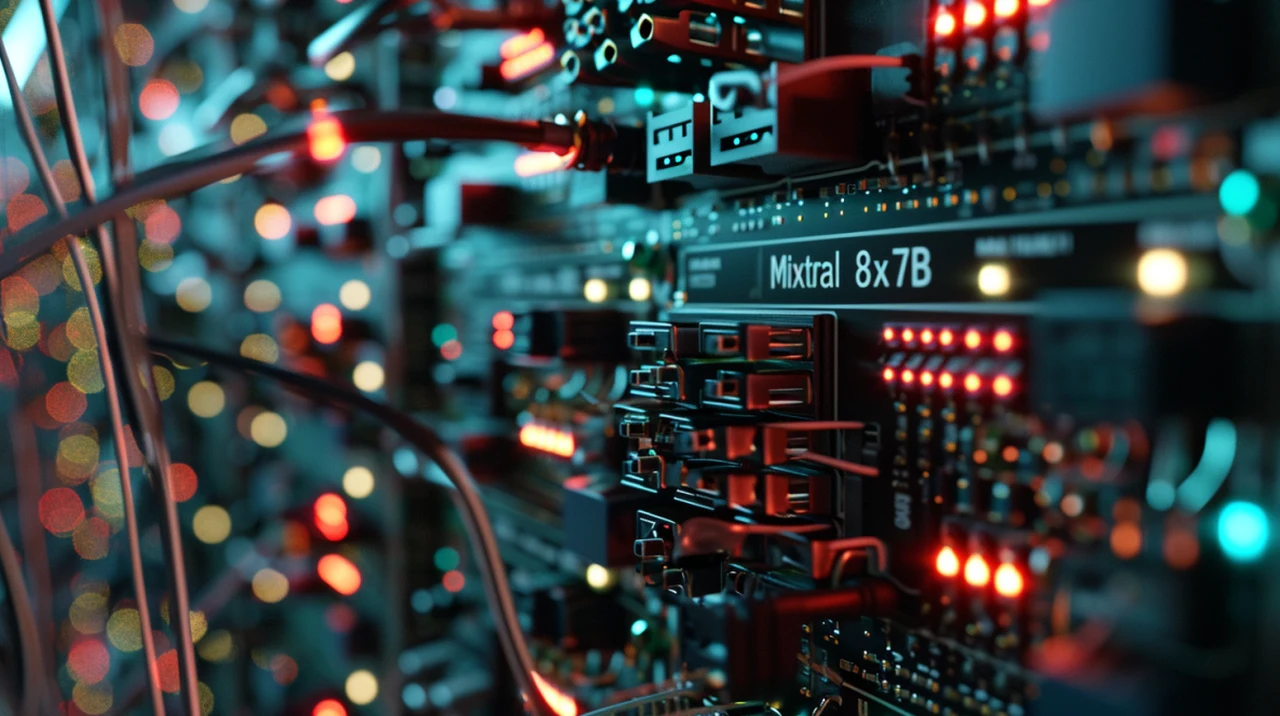
When it comes to enhancing the capabilities of the Mixtral 8x7B, an artificial intelligence model with a staggering 87 billion parameters, the task may seem daunting. This model, which falls under the category of a Mixture of Experts (MoE), stands out for its efficiency and high-quality output. It competes with the likes of GPT-4 and has shown to surpass the LLaMA 270B in some performance benchmarks. This article will guide you through the process of fine-tuning the Mixtral 8x7B to ensure it meets the demands of your computational tasks with precision.
Understanding how the Mixtral 8x7B operates is crucial. It functions by routing prompts to the most suitable ‘expert’ within its system, much like a team of specialists each managing their own domain. This approach significantly boosts the model’s processing efficiency and the quality of its output. The Mixtral-8x7B Large Language Model (LLM) is a pretrained generative Sparse Mixture of Experts and outperforms LLaMA 270B on most benchmarks.
Fine tuning Mixtral 8x7B AI model
To begin the fine-tuning process, it’s important to set up a robust GPU environment. A configuration with at least 4 x T4 GPUs is advisable to handle the model’s computational needs effectively. This setup will facilitate swift and efficient data processing, which is essential for the optimization process.
Given the model’s extensive size, employing techniques such as quantization and low-rank adaptations (LURA) is critical. These methods help to condense the model, thereby reducing its footprint without sacrificing performance. It’s akin to fine-tuning a machine to operate at its best.
Here are some other articles you may find of interest on the subject of Mixtral 8x7B AI model :
In this example the Vigo dataset plays a pivotal role in the fine-tuning process. It offers a specific type of output that is instrumental in testing and refining the model’s performance. The initial step involves loading and tokenizing the data, ensuring that the max length for data matrices aligns with the model’s requirements.
Applying LURA to the model’s linear layers is a strategic move. It effectively cuts down the number of trainable parameters, which in turn diminishes the intensity of resources needed and speeds up the fine-tuning process. This is a key factor in managing the computational demands of the model.
Training the Mixtral 8x7B involves setting up checkpoints, fine-tuning learning rates, and implementing monitoring to prevent overfitting. These measures are essential to facilitate effective learning and to ensure that the model doesn’t become too narrowly adapted to the training data.
After the model has been fine-tuned, it’s important to evaluate its performance using the Vigo dataset. This evaluation will help you determine the improvements made and verify that the model is ready for deployment.
Engaging with the AI community by sharing your progress and seeking feedback can provide valuable insights and lead to further enhancements. Platforms like YouTube are excellent for encouraging such interactions and discussions.
Optimizing the Mixtral 8x7B is a meticulous and rewarding process. By following these steps and considering the model’s computational requirements, you can significantly improve its performance for your specific applications. This will result in a more efficient and capable AI tool that can handle complex tasks with ease.
Filed Under: Guides, Top News
Latest timeswonderful Deals
Disclosure: Some of our articles include affiliate links. If you buy something through one of these links, timeswonderful may earn an affiliate commission. Learn about our Disclosure Policy.

